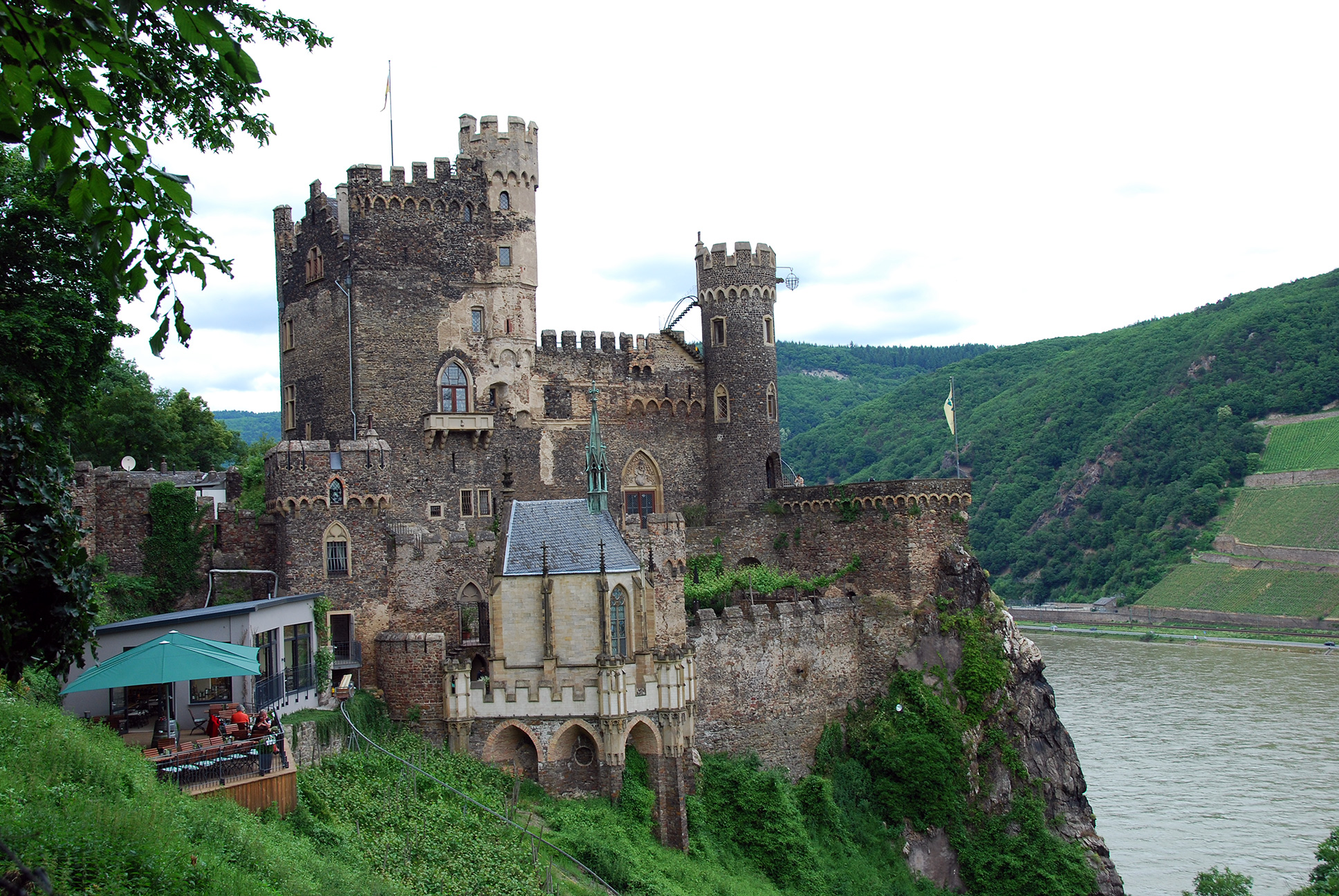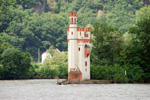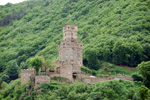History
Situated on a rocky ridge, Burg Rheinstein rises approximately 270 feet above the River Rhine in the Loreley Valley. Originally built as a customs post for the German Empire, it was called the Vogtsburg or Feitsburg. Castle construction began after 1290, probably under the Archbishop of Mainz, to monitor the reconstruction ban on nearby Burg Reichenstein, which King Rudolph of Habsburg had destroyed in 1286 after being used as a robber baron's nest of the Lords of Hohenfels. Rudolph von Habsburg founded the Noble Knighthood and renamed the castle Konigstein.

A second period of building was undertaken at the castle around 1330. But, by 1344, Burg Rheinstein began to lose its strategic importance in the region when the Electoral Palatinate renounced Reichenstein in favor of Mainz.
From the 14th to 17th century, the castle was leased to the Archbishops of Mainz. However, it began to fall into disrepair after 1572 when it became unprofitable for Anton von Wiltberg, Chamberlain in Mainz, to maintain its upkeep.
On March 31st, 1823, the castle ruin and its foundation stone were purchased by Friedrich Wilhelm Ludwig, Royal Prince of Prussia and nephew of King Friedrich Wilhelm III. After that, the castle was rebuilt under the direction of the famous architect Claudius von Lassaulx, who completed the rebuilding in 1829. The castle was renamed Burg Rheinstein due to its imposing rocky location above the River Rhine.
In 1842, the castle became a favorite residence of Prince Frederick, who hosted many heads of state at the castle, including Queen Victoria of England and Empress Alexandra Feodorovna of Russia. Plans were also drawn up for the chapel and crypt, which would be built within two years.
Since 1975, Burg Rheinstein has been privately owned by the opera singer Herman Hecher, who repaired and restored the castle over 19 years to regain its glory from days long ago.
Castle Highlights
Burg Rheinstein possesses a working drawbridge and portcullis, illustrating medieval construction and defense. Upon entering the castle and walking past the gift shop down to an opening on the left, the courtyard may be visited, which offers a spectacular view of the River Rhine. Burg Rheinstein's courtyard is known as the "Burgunder-Garden," named after the growing Burgundy grapevine. The vine, which is approximately 500 years old, still produces grapes.
From the garden, steps lead down to the chapel. In the center of the Gothic altarpiece of the chapel exists a woodcarving depicting Jesus at the Last Supper. Between the rock and chapel, additional steps lead down to the royal crypt of Prince Friedrich Wilhelm Ludwig's family.
Heading upwards to the Burgunder-Garden, another set of steps leads to the central portion of the castle. The largest and most impressive room of Burg Rheinstein is located at the top of the stairway to the left once inside the castle. The "Rittersaal" or "Knight's Hall" includes beautiful stained glass windows and three-dimensional paintings. Burg Rheinstein houses a cafe and gift shop offering miniature handmade wooden treasure chests and traditional items, including postcards and guidebooks for purchase.
Burg Rheinstein has a legend.







